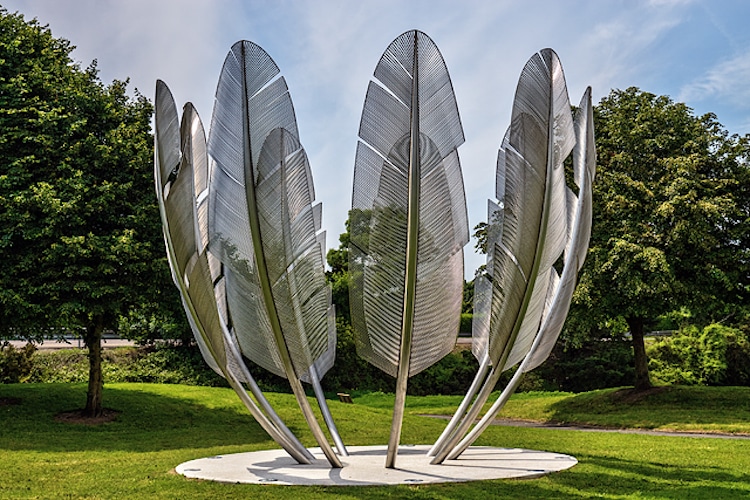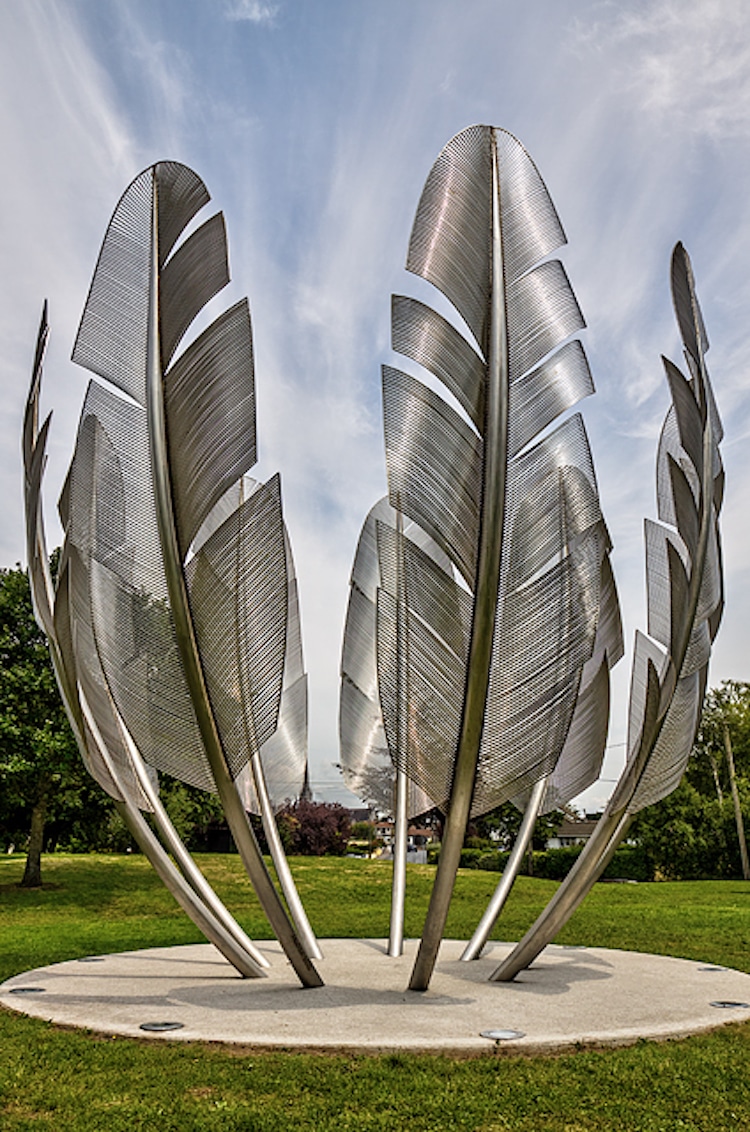Feather Sculpture Pays Tribute to Native American Generosity to Irish During the Great Famine

Kindred Spirits' sculpture, Bailic Park, Midleton (Photo via Mike Searle, (CC BY-SA 2.0)
Between 1845 and 1852, the potato crop in Ireland failed and caused what became known as the Great Famine. Around one million people died of starvation and two million fled the country. This cultural shift became one of the greatest mass migrations from a single island in history—in addition to having serious economic consequences.
Humanitarian aid came from around the world, but there was one group of people whose generosity stood out. In 1847, during the height of the famine, the Native American Choctaw Nation raised $170, which is the equivalent of around $5,000 today. The money helped to supply food to the starving Irish, and the donation also sparked a bond between the two cultures that continues today.
In the small town of Midleton in County Cork, Ireland, there’s a sculpture that commemorates the Choctaw Nation’s contribution titled Kindred Spirits. Created by Cork-based artist Alex Pentek, the magnificent, six-meter-tall sculpture is made of stainless steel. It features a series of giant metal feathers that symbolize the feathers used in Choctaw ceremonies. The pieces are arranged in a circle to represent the shape of an empty bowl—a common image for the Irish people who suffered during the famine. Pentak says, “I wanted to show the courage, fragility, and humanity that they displayed in my work.”
The Choctaw Nation felt sympathy towards the Irish people because they too experienced the trauma of leaving their homeland. Just 16 years before the Great Famine, the U.S. government forcibly removed the Choctaw people from their land and ordered them to relocate to designated parts of Oklahoma. The event is referred to by the Choctaw as the “trail of tears and death”; thousands of people walked more than 1,000 miles (1,600 km) with barely any food or possessions. As a result, 4,000 people died of hunger, cold, and disease.
In addition to the Kindred Spirits monument, there are more examples of how the Choctaw people and the Irish continue to support each other. In 1990, several Choctaw leaders took part in the first annual Famine walk at Doolough in County Mayo. Irish President Mary Robinson visited the Choctaw Nation in 1995 to thank them for their aid. And in 2020, the Irish people raised over $1 million to help the Navajo Nation during the COVID-19 pandemic. Today, both Choctaw and Irish people continue to work together to provide assistance for people around the world who are suffering from famine.
The Kindred Spirits sculpture in County Cork, Ireland commemorates the Choctaw Nation’s aid during the Great Famine.

Kindred Spirits' sculpture, Bailic Park, Midleton (Photo via Mike Searle, (CC BY-SA 2.0)
It looks extra beautiful at night and is lit by rainbow-colored lights.
The Kindred spirits monument in Midleton, Ireland, commemorating the Choctaw donation during the potato famine in 1850s from r/interestingasfuck
Related Articles:
Interview: Wet Plate Photographer Captures Powerful Portraits of Native Americans
Beautiful 50-Foot-Tall Sculpture Pays Tribute to Native American Women in South Dakota
Celtic Knots: Discover the Meaning Behind These Intricate Designs
READ: Feather Sculpture Pays Tribute to Native American Generosity to Irish During the Great Famine
0 Commentaires